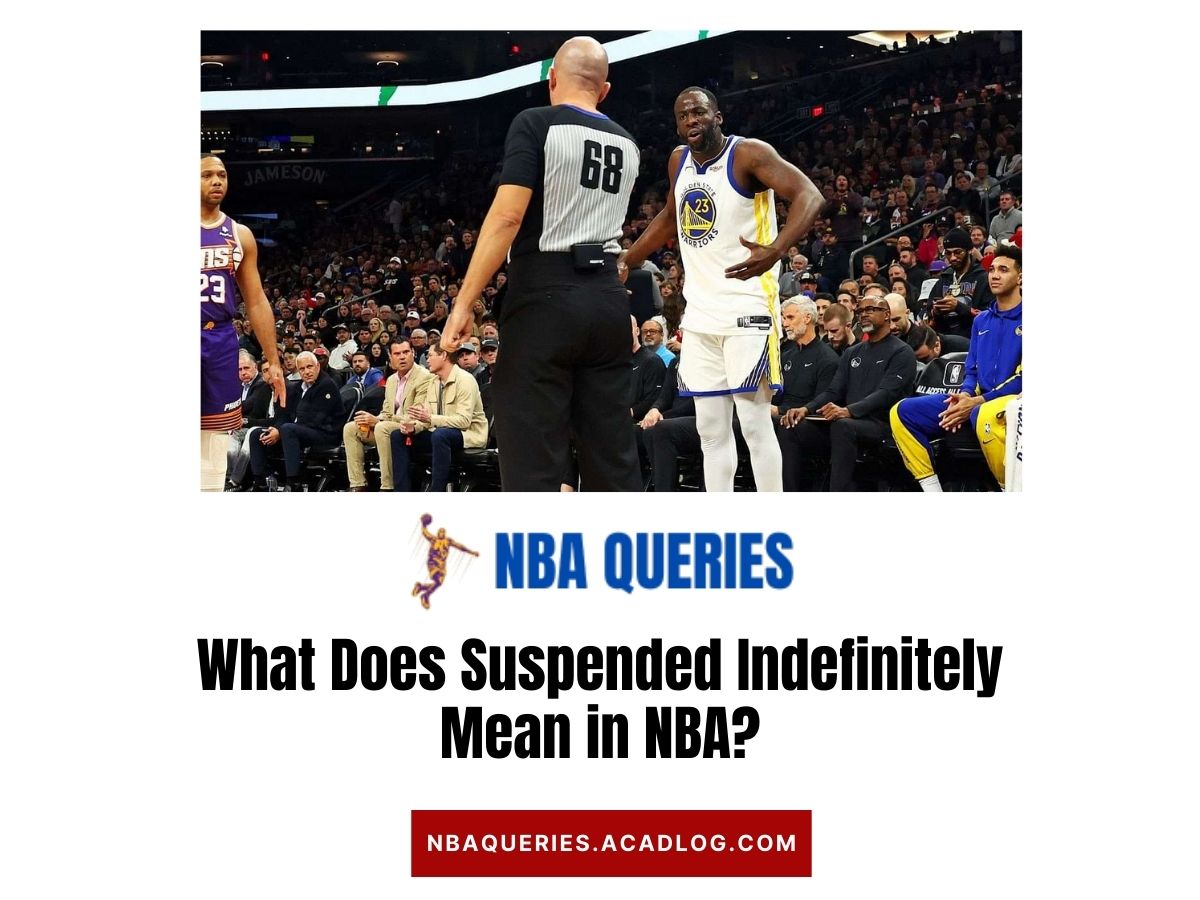The NBA, with its high-flying dunks, intense rivalries, and superstar athletes, is no stranger to player suspensions. These suspensions can vary in length, depending on the severity of the misconduct. From a few games to an entire season, players face consequences for their actions on and off the court. But what about the mysterious “suspended indefinitely”? Let’s delve into this intriguing aspect of NBA discipline.
Understanding Indefinite Suspensions
In layman’s terms, an indefinite suspension refers to a player being barred from participating in NBA games for an unknown duration. Unlike regular suspensions with fixed game counts, indefinite suspensions lack a specific endpoint. Instead, they hinge on the player’s completion of certain conditions set by the league and team. Here are the key points:
- Uncertainty: When a player receives an indefinite suspension, the exact number of games or days they’ll miss remains uncertain. It’s a waiting game, contingent on their compliance with stipulated requirements.
- Tasks and Conditions: The player must fulfill specific tasks or meet conditions before being allowed back on the hardwood. These conditions could involve behavioral changes, counseling, community service, or other corrective actions.
- No Pay: During the suspension, the player doesn’t receive any salary. The financial impact serves as an additional deterrent.
- League Decision: The NBA authorities decide when the player has adequately addressed the issues and is ready to return. It’s not a fixed timeline; rather, it depends on progress and rehabilitation.
Recent Example: Draymond Green
One recent star who faced an indefinite suspension is Draymond Green of the Golden State Warriors. Let’s break down his case:
- Incident: During a game against the Phoenix Suns, Green punched Jusuf Nurkic, resulting in an automatic ejection. His aggressive behavior led to the league announcing an indefinite suspension.
- Career Ejections: Green’s 18th career ejection (surpassing DeMarcus Cousins’ 17) played a role in the decision. The league considered his unsportsmanlike conduct throughout his career.
- Conditions for Return: The NBA stated that Green would need to meet specific league and team conditions before being allowed back on the court. These conditions likely involve behavioral adjustments and accountability.
- Nurkic’s Perspective: Jusuf Nurkic, the recipient of Green’s punch, expressed concern for Green’s well-being. He emphasized that the incident had nothing to do with basketball and hoped Green would seek help.
Why Indefinite Suspensions Matter
Indefinite suspensions are rare but impactful. They send a strong message about accountability, sportsmanship, and the league’s commitment to maintaining a respectful and safe environment. Players must recognize that their actions have consequences beyond the scoreboard.
The Psychology Behind Indefinite Suspensions in the NBA
1. Deterrence and Accountability
- Psychological Impact: When a player faces an indefinite suspension, it serves as a powerful deterrent. The uncertainty surrounding the duration amplifies the psychological pressure. Players realize that their actions have consequences beyond the court, affecting their reputation, team dynamics, and future contracts.
- Accountability: Indefinite suspensions emphasize accountability. Players must confront their behavior, reflect on their actions, and take corrective steps. The league’s message is clear: professionalism and sportsmanship matter.
2. Team Dynamics and Trust
- Trust Erosion: Within the team, an indefinite suspension can erode trust. Teammates may feel betrayed or disappointed by the suspended player’s actions. Trust is crucial for effective teamwork, and any breach can disrupt chemistry.
- Leadership Role: If the suspended player holds a leadership role, the impact is magnified. Teammates look up to leaders for guidance and stability. When a leader falters, it sends shockwaves through the team.
3. Fan Perception and Brand Image
- Fan Disappointment: Fans invest emotionally in their favorite teams and players. An indefinite suspension disappoints fans, especially if the player was a fan favorite. It affects ticket sales, merchandise, and overall fan engagement.
- League Reputation: The NBA’s reputation is at stake. Fans expect fair and consistent decisions. If the league mishandles an indefinite suspension, it risks alienating fans and damaging its brand image.
4. Historical Instances
- Metta World Peace (Ron Artest): In 2004, Artest (then with the Indiana Pacers) received an indefinite suspension for his involvement in the infamous “Malice at the Palace” brawl. His return required therapy and community service.
- Roy Tarpley: The Dallas Mavericks’ Tarpley faced multiple indefinite suspensions due to substance abuse. His career never fully recovered, highlighting the long-term consequences.
5. Balancing Justice and Rehabilitation
- Fairness: The league must strike a balance between justice and rehabilitation. While indefinite suspensions send a strong message, they should also provide a path for redemption.
- Support Systems: Players need support during suspensions—counseling, mentorship, and guidance. The goal is not just punishment but growth.
Conclusion
Indefinite suspensions remain enigmatic, leaving fans and players wondering when—or if—the suspended athlete will return. As the NBA continues to grapple with behavioral issues, these suspensions serve as a reminder that basketball extends beyond the court, impacting lives and shaping the league’s legacy.
This articles seems interesting to you? Stay tuned for more insights and analysis on the fascinating world of NBA discipline!

